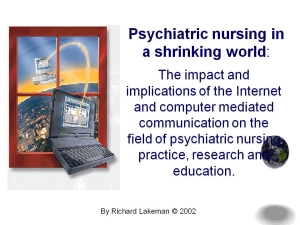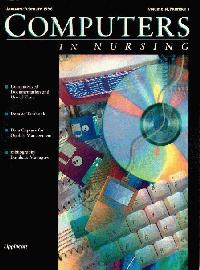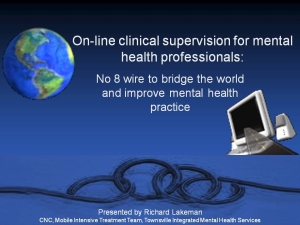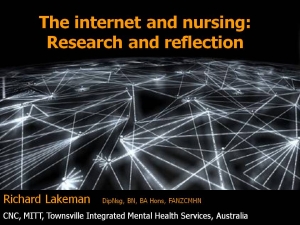Within the last decade computer mediated communication (CMC) facilitated by the growth of the Internet has transformed the way many people relate to each other and their world. In a metaphorical but very real way the world has become a smaller place in which distance and time may be transcended and bridges between cultures are built at a keystroke. The rapid growth in this area of technology and the exponential growth of internet usage poses a challenge to traditional notions of identity and community which are central constructs in the theorising and practice of psychiatry, psychotherapy and psychiatric nursing. This paper considers the impact and implications that CMC might have on the field of psychiatric nursing education, practice and research.






